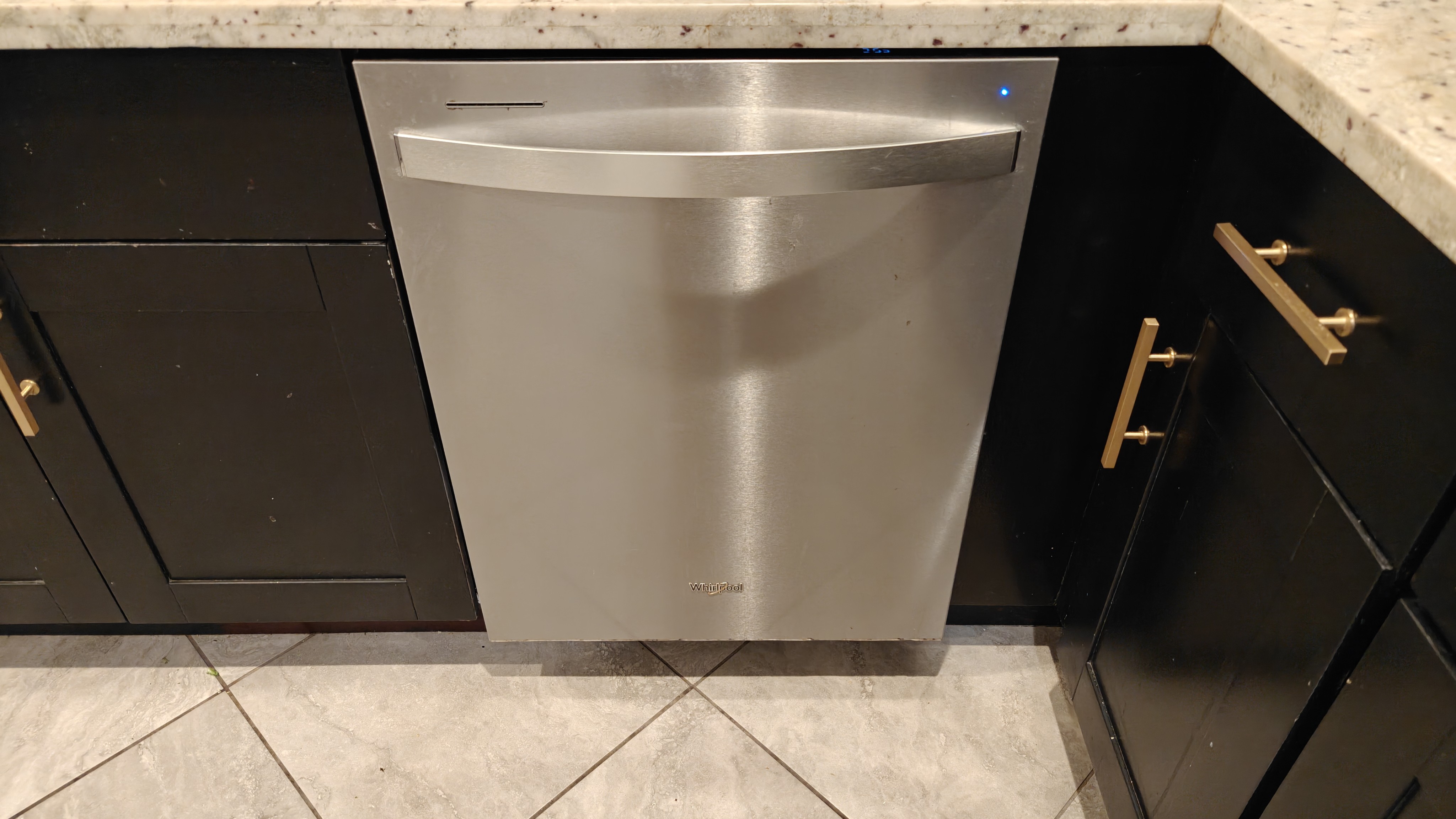Anvil pruner vs bypass pruner—which pruning shears to use?
The right choice of tool is crucial to clean, effective pruning
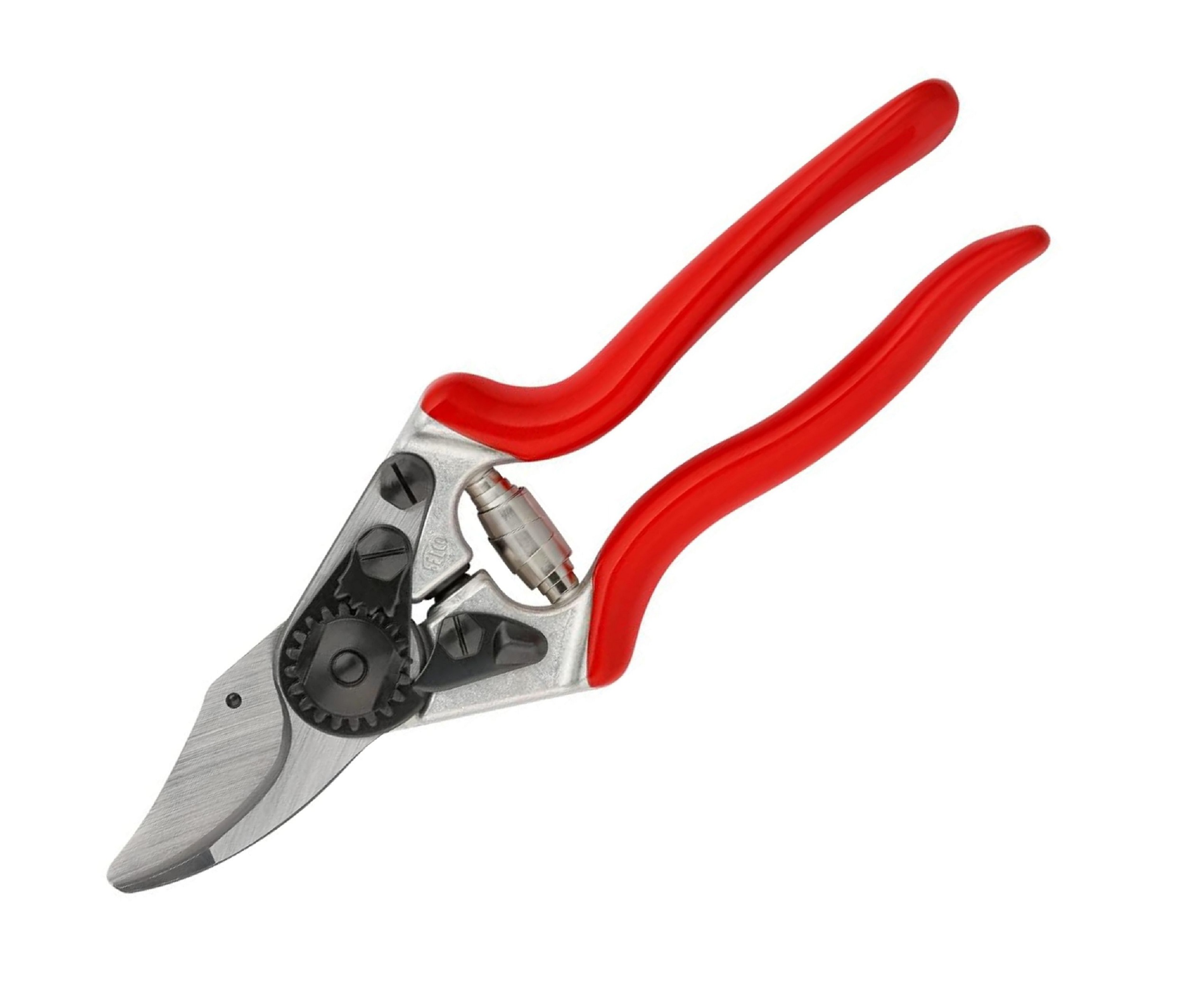
Type: Bypass pruner
Cutting capacity: 0.79″
Blade material: Hardened steel
Handedness: Right
Out of all the bypass pruners I've tested for TopTenReviews, the Felco 6 is the best. These classic, Swiss-made shears are super-sharp, with exellent pruning performance across tender plant stems and slender tree branches.
Pros
- Incredible design and build quality
- Cuts like a hot knife through butter
- Ergonomic comfort
Cons
- Expensive
- Maintenance instructions could be more accessible
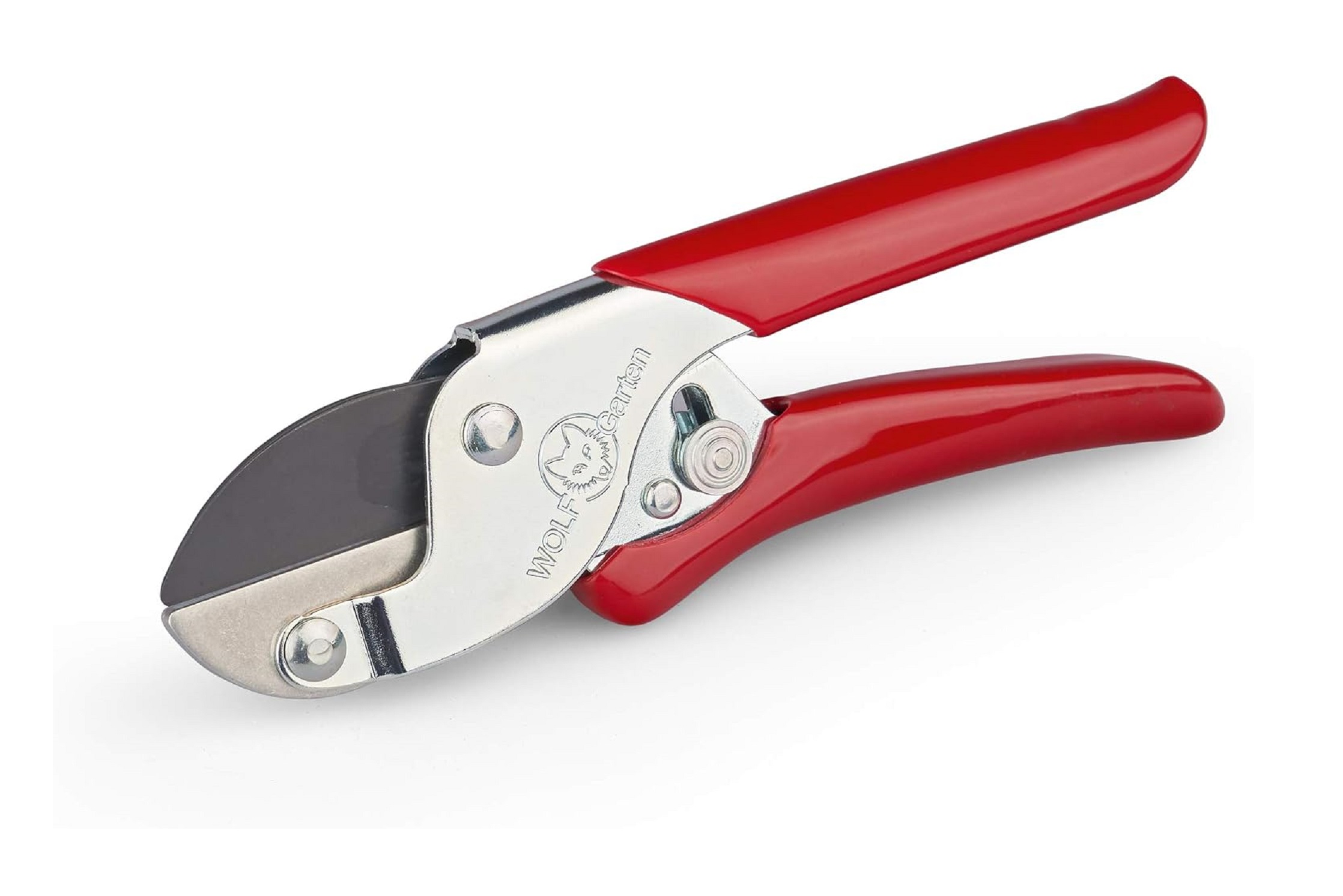
Type: Anvil pruner
Cutting capacity: 0.75″
Blade material: Coated metal
Handedness: Left or right
This attractively finished, reasonably priced anvil pruner from Wolf-Garten powerfully prunes tree branches up to a thickness of 0.75 inches, and it's precise enough for some plant pruning tasks too. A valuable addition to your plant care inventory.
Pros
- Powerful branch cutting
- Attractive, traditional pruner design
- Comfortable handles
- Intuitive, adaptable design with two speeds and two orientations
Cons
- Blade design rules out cutting thicker tree branches
- Good, but not great, at delicate pruning tasks
I've tested a lot of pruners in my time and, during the process, it quickly became clear that the type of pruner—e.g. bypass pruner vs anvil pruner—made a world of difference to context-specific pruning performance.
There are many pruning activities you can do to improve the appearance and health of plants. At the more delicate end of the scale, you can use a sharp, precise pruner to deadhead flowers or snip fruit stems. Or, you can use a more powerful tool to chomp through tough stems and tree branches.
Catering for the diverse tasks that you can achieve with a set of the best pruners, there are several types of pruning shears with their own specialisms worth noting. Two of the most popular are bypass pruners and anvil pruners. In this article, I’ll take you through the different uses, design features and capabilities of these particular pruning shears.
Anvil pruner vs bypass pruner: What's the difference?
The most important thing to know about anvil pruners and bypass pruners is that these two types of pruner are designed for different work.
Anvil pruners have a powerful blade design that’s specialized for pruning tree branches and tough stems, using a crush-and-cut action. They are brilliant at pruning hard plant matter, but not ideal for pruning delicate plant stems.
"If you are pruning dead or woody stems, anvil shears are better suited for tougher, thicker branches." says Marek Bowers, sustainable garden designer and landscaping expert at Bolder Green. "Anvil pruners are better suited for deadwood and dry branches, using a single straight blade that cuts against a flat anvil, making them capable of handling thicker branches," adds Morris Hankinson, Garden Expert at Hope Grove Nurseries.

Marek Bowers is a sustainable garden designer and landscaping expert. He is also founder of Bolder Green, a website that helps people create eco-friendly yards.
Bypass pruners are more of an all-rounder than anvil pruners. A good-quality pair of bypass shears will cut hard tree branches or sinuous vines reasonably well, but not as easily as an anvil pruner. Where bypass pruners really come into their own is in delicate pruning tasks, such as cutting back soft stems or deadheading flowers.
Sign up to receive the latest news, reviews, buying guides and deals direct to your inbox
"If you are pruning live, green plants then bypass shears are ideal because they provide a clean cut," notes Bowers. Hankinsons goes on to add that "Bypass pruners feature two curved blades that bypass each other like scissors that provide clean cuts with minimal damage to plants."

Morris Hankinson is the Founder and Managing Director of Hopes Grove Nurseries Ltd, the UK’s only specialist grower-retailer of hedging plants.
If you need to choose a pruner for mixed use, including pruning soft plants, shrubs and thin tree branches, then a bypass pruner would be the ideal pick to handle most of the pruning work in your yard. Meanwhile, adding an anvil pruner to your collection will make it easier to cut tough plant matter, without dulling the blades of your prized bypass pruner.
Anvil pruner vs bypass pruner: Price
Bypass pruners and anvil pruners come at similar prices to one another, ranging from around $10 for a cheaply-made budget model, up to $60 for a beautiful, premium model. You can find very good pruners of both types for around $20.
Verdict: Relative to most other yard tools, anvil pruners and bypass pruners have a very low cost per use. Given their reasonable pricing, we suggest you consider buying one pruner of each type, so that you can use the very best tool for each pruning task.
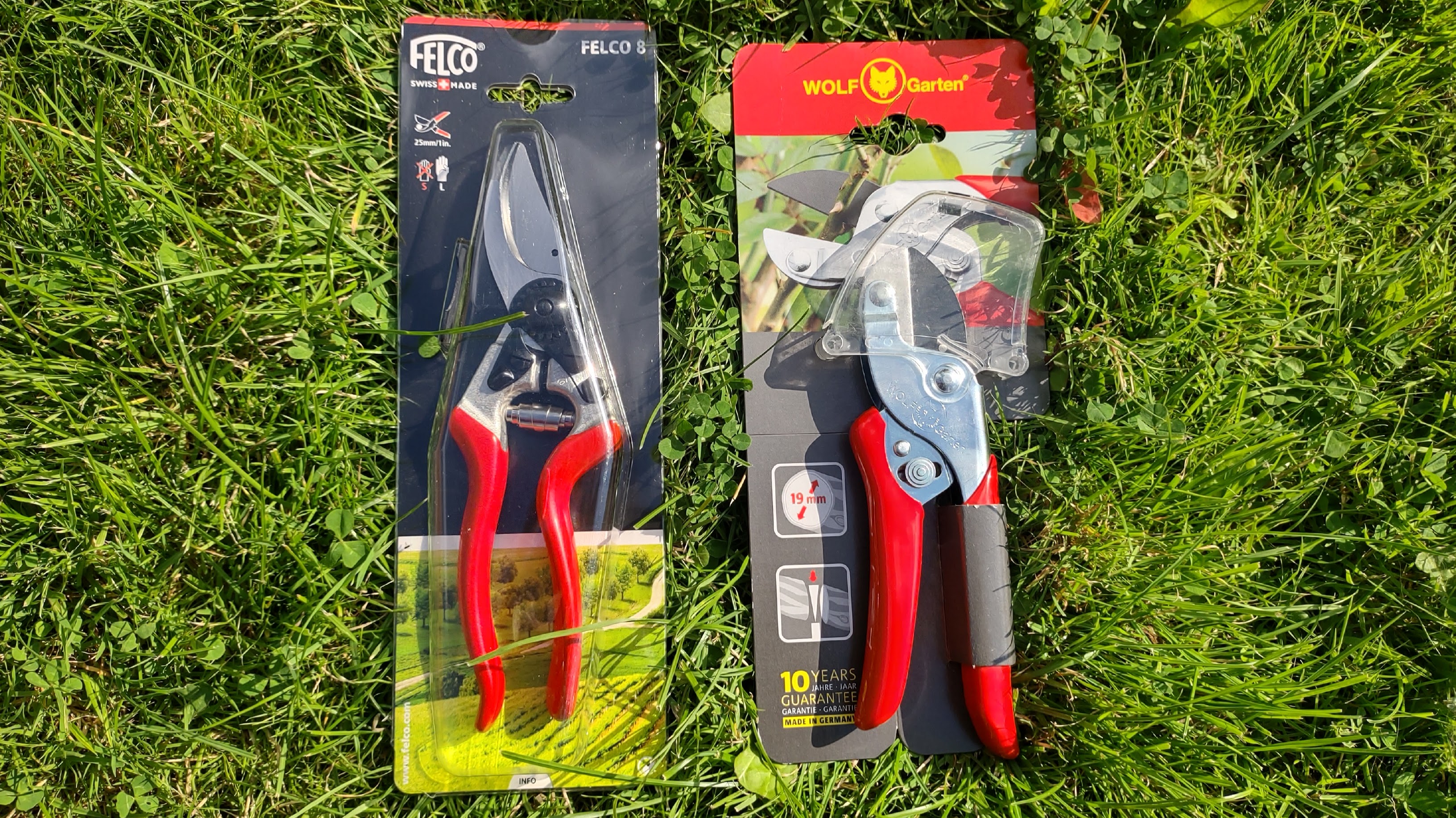
Anvil pruner vs bypass pruner: Design & Features
Anvil pruners and bypass pruners look pretty similar to each other. Both usually have ergonomic handles for single-handed use, plus a pair of metal cutting blades.
Where these two types of pruning shears really differ is in how they cut. A bypass pruner has two sharp, curved blades that cut plant matter as they pass against each other—hence the term ‘bypass’. This action produces a clean, accurate cut, which minimizes the area of cut stem that could be left open to pests and diseases. Think of how a good pair of scissors cuts paper. That’s how bypass pruners work.
Anvil pruners have a totally different blade design. One of their blades is sharp, like a bypass pruner blade – but the other one is flat, like the top of an anvil. The flat blade crushes the branch or stem, while the sharp blade slices through the weakened plant matter. This anvil cutting action makes it easier to cut tough stems and branches, but it will often produce a more ragged cut. Basically, you’re trading some finesse for enhanced power.
Beyond their basic design and function, both bypass pruners and anvil pruners can come with all sorts of additional features. Useful extras to look out for include adjustable blades, sap gutters and force multiplication gears.
Verdict: Anvil pruners and bypass pruners are both perfectly designed for their particular work. Anvil pruners tough cutter plant matter, while bypass pruners are better at pruning soft plants and have greater versatility. Choose a type and model to suit your intended pruning tasks.
Anvil pruner vs bypass pruner: Power & Size
In one sense, anvil pruners are more powerful than bypass pruners, as their blades are capable of pruning tougher branches and stems. They crush, as well as cut.
Bypass pruners lack the crushing power of an anvil pruner, but they’re much better at applying cutting force to a narrow area, thanks to their sharp, cleverly designed blades.
Most bypass pruners and anvil pruners are manually operated. You use the strength of your hand to squeeze the handles and close the blades, so it may take some effort to achieve the cutting power needed. This can be problematic for people who have lots of plants to prune, or whose hands are affected by a condition such as arthritis or carpal tunnel syndrome.
For higher pruning power and lower physical effort, you can get cordless electric pruners of each type—anvil or bypass—powered by a rechargeable lithium-ion battery. These battery powered pruners often provide very easy cutting, although they’re a little harder to control than a manual pruner, and they come at a higher price.
In terms of size, anvil pruners and bypass pruners are highly similar. Both types are built for the human hand, and they’re sold in a range of sizes to suit different people— usually classed as ‘Small’, ‘Medium’ or ‘Large’.
One pruner size specification that you really need to look at is the cutting capacity (AKA cutting width), which tells you the maximum diameter of branch that the shears can cut.
A greater cutting width means the blades open wider, and are capable of severing relatively thick stems or branches. If you use a pruner to cut something wider than its cutting capacity, this can result in messy pruning that harms the tree or damages the blades. So, you need to pick a pruner that has a cutting capacity greater than the width of your tree’s branches.
Anvil pruners and bypass pruners tend to have similar cutting capacities, while alternative tools such as loppers (like the Fiskars PowerGear Anvil Lopper XS L31) or pruning saws can be used to prune wider branches.
Verdict: Anvil pruners are more powerful than bypass pruners, in terms of their capacity to cut tough branches and stems. However, bypass pruners are more effective at neatly cutting soft plant stems and thin branches, thanks to the superior sharpness of their blades. Both types of pruner are sized for one-handed manual operation.
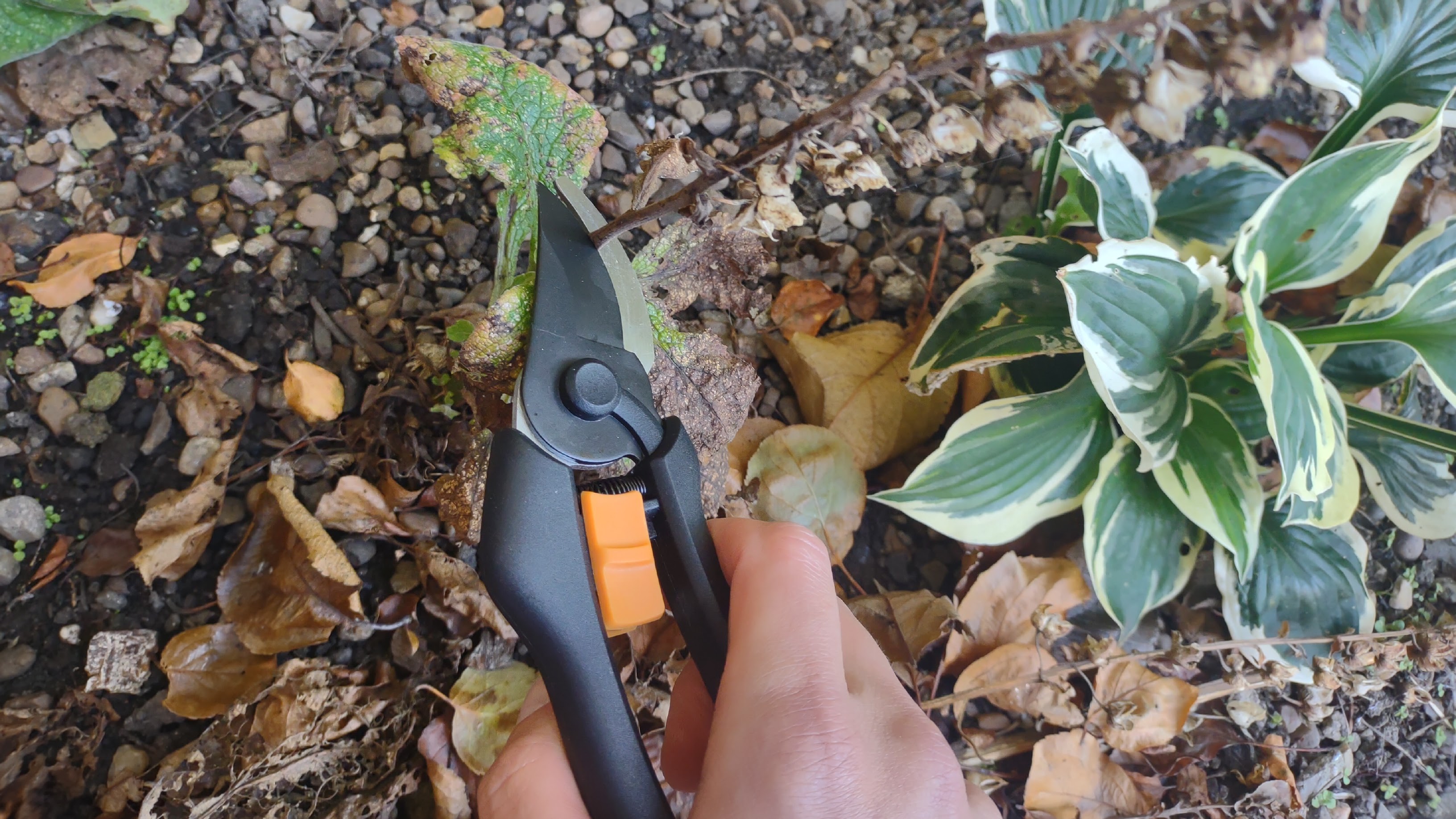
Anvil pruner vs bypass pruner: Our verdict
Bypass pruners and anvil pruners are both very well designed for their intended work, so the best one to choose depends on which pruning tasks you have in store.
The more versatile choice would be a bypass pruner, as these can be used to cut slender tree branches, as well as pruning tender plant stems and flower heads superbly well.
Anvil pruners are more specialized, thanks to their crush-and-cut action that’s particularly well suited to cutting thicker tree branches and tough stems.
If you have enough budget spare, we would recommend buying one pruner of each type to cater for a full range of pruning tasks.
String trimmer vs lawn edger: FAQs
Do pruning shears need to be sharpened?
Diligent maintenance will help you get optimal performance out of your pruning shears for longer. One of the most important routine tasks is sharpening the blades of your pruner—or replacing blades that are broken or badly worn.
You can sharpen pruner blades by honing their edge with an implement such as a whetstone or diamond-edged file. Remember to move the implement across the blade at the same angle as the cutting edge itself, to preserve the intended cutting action. If you have an anvil pruner, you’ll only need to sharpen one of its blades—the one that’s designed for cutting.
Regular cleaning is also important to keep a pruner in tip-top condition. Use steel wool to scour away plant residue such as dried-on sap.
Are there any alternatives to bypass pruners or anvil pruners?
An incredibly wide range of pruning shears types exist to cater for various pruning tasks, some of which are highly specific.
Some alternatives to bypass pruners or anvil pruners including snips like the Fiskars Solid Snip Pruning Micro-tip SP13, mini chainsaws like the Greenworks 24V 6" Brushless Pruning Saw, and fruit pruners designed especially for harvesting fruit.
Choosing the right pruner for each pruning task is important to plant health and the condition of your tools.
What is pruning?
Pruning is any process where matter is cut away to improve the health or appearance of a plant or tree. Pruners—such as anvil pruners and bypass pruners— are among many types of tool used for this purpose, alongside others such as snips, pruning saws, loppers and chainsaws.
There are several reasons why you might prune a plant, including restricting overgrowth, encouraging stronger growth, removing dead or damaged parts, picking fruit, collecting flowers or preventing branches from rubbing together. It’s easy to make pruning mistakes that cause harm to plants or trees—so do some research before you start snipping.

Pete has reviewed hundreds of gardening products for titles including TopTenReviews, Ideal Home and the London Evening Standard, as well as writing articles on diverse topics for other publications such as The Guardian and BBC Good Food. Pete loves spending time in his yard – although, having just read The Day of the Triffids by John Wyndham, he is regarding his plants with a newfound suspicion.
